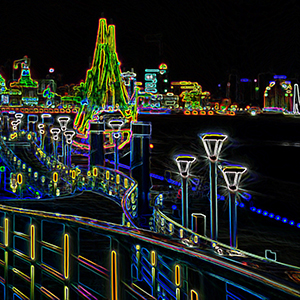New Technologies for Sustainable Energy in the Smart City: the WET Theory
Abstract
The paper tries to develop a new approach to sustainable planning for the smart city. The relationship between new technologies and the urban system could be developed in a new way considering of the WET theory. The WET theory starts from the main components for establishment and the survival of the human settlements: Water, Energy and Technologies (WET). Considering this approach, the technology could be envisaged as a switch element for the biforcation that could be generated inside the process of management of the modern urban systems. From one end the technology can improve the use of renewable energies and promote a different way of use the energy inside the city. From the other end the technology can permit a huge structural works that can drive the urban system towards a worst dimension causing permanent change inside the territory as a whole particularly at large scale. The paper propose a focus on the two mentioned possibilities considering the best dimension, proposed by the DESERTEC project and the worst one prefigured by the South to North Water Diversion Project that is ready to start in China.Downloads
References
Boncinelli E. (2006), L’anima della tecnica, Rizzoli, Milano.
Chertow M.R. (2001), “The IPAT equation and its variants”, in Journal of Industrial Ecology, 4 (4):13-29.
Commoner B. (1972), The closing circle, Alfred A. Knopf - Garzanti Editore.
DESERTEC Foundation, Principles, Criteria and Indicators for the Evaluation of Renewable Energy Power Plants - Version 1.0, www.desertec.org
Fistola R. (2013), “Smart City, riflessioni sull’intelligenza urbana”, in TeMA Journal of Land Use Mobility and Environment, 1/13 (www.tema.unina.it).
Fistola R. (2012), “Urban entropy vs sustainability: a new town planning perspective”, in Pacetti M., Passerini G., Brebbia C. & Latini G., The Sustainable City VII. Urban regeneration and sustainability, WIT Transactions on Ecology and the Environment, Series Volume 155, WIT Press.
Fistola R. (2010), Ecourbanistica: toward a new sustainable town planning, in Brebbia C., Hernandez S., Tiezzi E., (eds.), The Sustainable City VI. Urban regeneration and sustainability, WIT Transactions on Ecology and the Environment, Series Volume: 129, WIT Press.
Fistola R. (2001), M.E-tropolis- funzioni innovazioni trasformazioni della città, Giannini, Napoli.
Fistola R., La Rocca R. A. (2013), “Smart City Planning: a systemic aproach”, in proceedings of: The 6th Knowledge City World Summit, Istanbul, September 2013.
Fistola, R., La Rocca R.A. (2001), “The virtualization of urban functions”, in: NETCOM n.15: “Geocyberspace: building territories in geographical space on the 21st century”, settembre 2001.
Fistola R. (1992), La città come sistema, (Volume II, Chapter 2). Per il XXI secolo una enciclopedia. Città cablata e nuova architettura, eds. C. Beguinot and U. Cardarelli, Università degli Studi di Napoli "Federico II" (Di.Pi.S.T.), Consiglio Nazionale delle Ricerche (I.Pi.Ge.T.), Napoli, 1992.
Gibson J. E. (1997), Designing the new city: a systemic approach, John Wiley, London and New York.
Moore S., 2013, China’s Massive Water Problem, New York Times, march 2013.
Ortega y Gasset J, (1933), “Man, as project”, in Reading For Philosophical Inquiry: Article Series.
Papa R. (1992), La città funzionale, in C. Beguinot, U. Cardarelli (a cura di), 1992, Per il XXI secolo una enciclopedia. Città cablata e nuova architettura, Università degli Studi di Napoli "Federico II" (Di.Pi.S.T.), Consiglio Nazionale delle Ricerche (I.Pi.Ge.T.), Napoli, vol. II, cap. 2.
Pulselli R.M. e Tiezzi, E. (2008), Città fuori dal caos. La sostenibilità dei sistemi urbani, Donzelli Editore, Firenze 2008.
Regulsky J. (1983), La pianificazione della città un approccio sistemico, Officina Edizioni, Roma.
Rifkin J. (1972), Entropy: Into the Greenhouse World , Bentam, Rev Rei edition.
Sachs, J. D. (2008), Common Wealth Economics for a Crowded Planet, Penguin Press, New York, USA.
TREC Development Group, Trans-Mediterranean Renewable Energy Cooperation “TREC” for development, climate stabilisation and good neighbourhood, www-desertec.org

Copyright (c) 2014 Tema. Journal of Land Use, Mobility and Environment

This work is licensed under a Creative Commons Attribution 4.0 International License.
Authors who publish in this journal agree to the following:
1. Authors retain the rights to their work and give in to the journal the right of first publication of the work simultaneously licensed under a Creative Commons License - Attribution that allows others to share the work indicating the authorship and the initial publication in this journal.
2. Authors can adhere to other agreements of non-exclusive license for the distribution of the published version of the work (ex. To deposit it in an institutional repository or to publish it in a monography), provided to indicate that the document was first published in this journal.
3. Authors can distribute their work online (ex. In institutional repositories or in their website) prior to and during the submission process, as it can lead to productive exchanges and it can increase the quotations of the published work (See The Effect of Open Access)
